The Deadly History of the Philippines
Arnis, (aka Kali or Eskrima/Escrima), is the national martial art of the Philippines. The three names are roughly interchangeable terms for the traditional Filipino Martial Arts (FMA). Arnis is characterized by weapon-based fighting with sticks, knives, bladed weapons, and various improvised weapons. However, it also incorporates unarmed techniques including striking, joint lock, grappling, and weapon disarming elements. The origin of Arnis is heavily intertwined with Filipino history and the different cultures of various tribes on the islands. Arnis practitioners are famous for their lightning-fast movements, efficient footwork, weapons proficiency, and vicious unarmed techniques. Much of its lethal reputation stems from the Island chain’s bloody history.
Table of Contents
Arnis? Escrima or Kali? I'm confused...
Arnis is known by various names depending on where you are in the Philippines. Certain names are preferred in different regions of the Islands. The name Arnis comes from a Spanish word meaning ‘armor’ predominantly used in the northern parts of the Philippines. Escrima/eskrima, from the Spanish term esgrima meaning ‘fencing’ (Central Philippines). The term Kali is possibly derived from Kalis, the pre-Hispanic Filipino term for blades and fencing (Southern Philippines). All three are interchangeable terms for Filipino martial arts (FMA). For the purposes of simplicity, we will refer to the art as Arnis or FMA in this post.

A Brief History of FMA
The origin of Arnis can be traced back to various native fighting techniques used throughout conflicts in Filipino history. These extend from Prehispanic Filipino tribes or kingdoms to the fencing styles brought by conquistadors from 15th century Spain. Since the Philippines attracted many settlers and traders from around the region there were many other foreign influences to the art. Travelers from the Malay Archipelago brought the influence of Silat. There were also influences from Chinese, Arab and Indian fighting arts. For centuries the various tribes of the islands fought each other in internecine wars. Each using the various fighting styles they had developed.
I'm a fighter not a writer!
One of the problems with tracing Arnis’ history was that actual records of the early techniques and styles don’t exist. Like many ancient peoples, the Filipinos tribes had an oral tradition, where knowledge was passed between master and student informally. This made attempts to trace an actual lineage of origins, practitioners, and influences very difficult. Most records of Arnis exist only from after the Spaniards arrived in the Philippines. The first recorded use of Arnis was when the Spanish were fought off by native islanders when they tried to invade. Thanks to the efforts of Filipino martial artists and historians, some degree of a timeline has been achieved over time.
The Spanish invaded the islands in 1521. Even with their technological superiority, the conquistadors were hard-pressed in dealing with the largely unarmored Filipino defenders. The Filipinos were equipped with nothing more than bladed weapons and their ferocious combat skills. The islanders still fended off the musket-bearing, heavily armored, conquistadors when they initially tried to invade. The leader of the invading expedition was none other than famous explorer Ferdinand Magellan. Largely considered one of the greatest warriors of that time. Magellan was killed by Filipino natives attempting to conquer the islands at Cebu during the Battle of Mactan. Magellan’s outnumbered forces were defeated by the forces of Datu Lapu-Lapu, the chief of Mactan.

The Spanish eventually returned with greater numbers and firepower and successfully conquered parts of the Philippines. Initially the Spanish were impressed with the natives’ weapons-based fighting style. As the conquistadors forged bonds with some of the locals they began to trade techniques. They learned and developed fencing skills from the Spanish to augment already existing native techniques.
However, in 1596, the practice of Filipino fighting techniques was banned for a number of reasons. The most popular theory being that the Spanish authorities thought to be too dangerous, wanting a demilitarised and easily controlled Filipino population. Another theory holds that such was the passion for Arnis that the natives spent most of their time learning and practicing the art, to the detriment of farming and other economic activities. A final theory holds that there was a law and order situation. Duels were apparently frequent during fiestas, especially when drink was involved, and the mortalities began to add up.
Regardless, the colonial administration banned the practice of Arnis and the art had to go underground. It was preserved by incorporating Kali movements into the religious Moro-Moro dances and in mock battles. Although the Spanish influence did have an overall pacifying effect on Filipino martial culture the warrior ethos survived. The same warrior ethos continues to be a proud and integral part of Filipino culture.

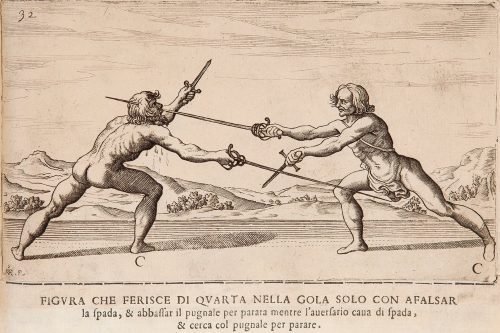
One of the more prominent features of Arnis that point to possible Spanish influence is the Espada y Daga (Spanish for ‘sword and dagger’) method, a term also used in Spanish fencing. Kalis archivist Romeo Macapagal estimated that 40% of the blade-oriented styles descended from European styles, brought by the Spanish.
After the American Spanish war (1898), Spain gave over control of the Philippines to the United States. The natives were not too happy at being passed from one overlord to another and decided to revolt.
This led to Americans being exposed to Arnis for the first time during the ensuing conflict. The war was a savage one with many atrocities on either side. Although the US eventually won they were shocked at the lethal guerilla war tactics of the islanders. As well as the ferocity and skill of their opponents in hand-to-hand combat. Savage events litter the war, such as the Balangiga massacre. It was here that soldiers in an American company were hacked to death or seriously injured by bolo-wielding guerillas. Another tale comes from a battle at Mindanao where an American serviceman was decapitated by a Moro warrior. This was after the serviceman had emptied the chamber of his .38 Long Colt caliber revolver into his opponent.
The Philippines was the bloodiest theatre of the Pacific War for the invading Japanese Empire. At least 498,600 Japanese troops were killed in fighting the combined Filipino resistance and American soldiers on the islands. The guerrilla warfare of the Arnisadors was so effective, the Japanese Empire managed to control only 12 out of 48 provinces of the Philippines. During the conflict, Filipinos fought the Japanese hand-to-hand with their blades as guerilla fighters. They also fought in military units under the USAFFE (United States Army Forces in the Far East).
These units included ‘Bolo Battalion’ (aka Tabak Division).
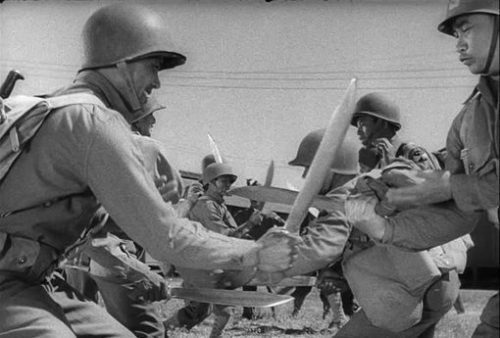

Don’t f$%k with Bolo Battalion!!
It was during WWII, several American servicemen stationed in the Philippines were introduced to the Filipino Martial Arts. This lead to the art reaching the US despite the fact that natives were reluctant to allow outsiders in on their fighting secrets.
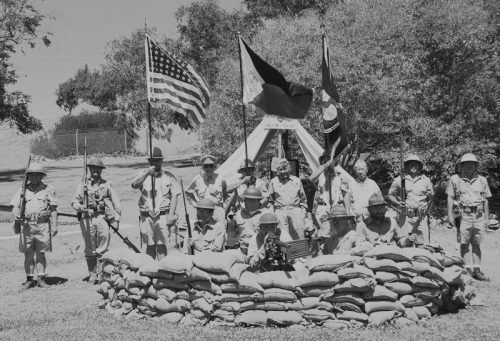
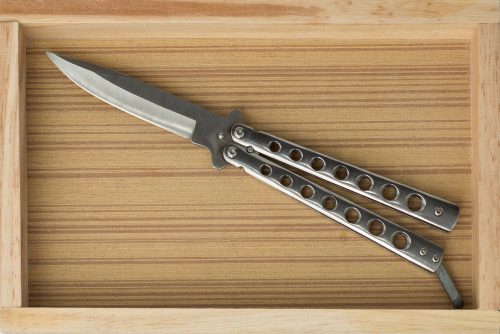
It was after this exposure to Arnis that weapons such as Escrima batons and the Balisong knife (above right) began to appear on US shores.
Modern history
In 1966 Remy Presas began developing his system which he called ‘Modern Arnis’. Remy had trained in the Filipino arts since the age of six and had been involved in numerous escrima duels. He had also studied Judo and Karate extensively. Remy began identifying the basic concepts of the numerous systems he had learned and merging them into Modern Arnis. His goal was to create a well-rounded and effective self-defense system. One that was injury-free (Arnis training was notoriously brutal before this) and that preserved the older Arnis systems traditions.
Alongside his foundation styles, Remy continued to research and study other Filipino systems and traditions. He was particularly interested in Balintawak Eskrima. His desire to reinvigorate interest in his country’s traditional martial art. He continued to make modifications and improvements to what he had learned. Unfortunately, political considerations eventually forced him to relocate to North America.


Remy Presas, founder of Modern Arnis.
It was in the US that he met other martial artists who influenced his development of the art of Modern Arnis. These included Wally Jay (Judo, Jujitsu), George Dillman (Ryukyu Kempo Karate). Remy learned much from his peers and adapted Arnis accordingly, integrating what he had picked up. However, he always retained a focus on the single stick and general self-defense.
Remy Presas died in 2001. Following his death, there was a splintering of the remaining leadership of Modern Arnis. With several rival factions emerging with their versions of Arnis. Regardless, the art of Modern Arnis continues to develop and is very popular both at home and worldwide.
Surge in Popularity
FMA has been well accepted across the world in popular culture. Arnis first rose to prominence on the international stage largely thanks to the relationship between Dan Inosanto and Bruce Lee. Inosanto from California was a big promoter of some of the more obscure (at the time) martial arts of southeast Asia. These included Pencak Silat (Malaysian) and Escrima. Inosanto was a friend and student of Bruce Lees and in time starred in several martial arts films. Bruce Lee’s own martial arts style (Jeet Kune Do) incorporated several concepts from Filipino martial arts. Indeed Jeet Kune Do’s whole philosophy was based on ‘absorbing’ whatever was ‘useful’ from other traditional martial arts.



FMA helped get a big push from martial arts legends Daniel Inosanto (left) and Bruce Lee (right). Inosanto studied many of the obscure Southeast Asian martial arts such as Escrima and Silat. Bruce Lee would go on from becoming a screen legend to incorporating elements of FMA into his own martial arts system, Jeet Kune Do.
Over the years Arnis continued to grow in popularity. The close-quartered, fast-paced style of Arnis has proved to be a big hit with both directors and audiences. This was largely thanks to portrayals in the movies ranging from The Bourne Identity, Taken, and Kick-Ass. The Bourne Identity (2002) features a brutal Kali-style knife fight when Jason Bourne encounters another ‘Treadstone’ agent sent to eliminate him. Liam Neeson uses a combination of Arnis and Silat to rescue his daughter from her captors in Taken (2008). In the movie Kick-Ass (2010), the main character fights crime using Escrima batons. His vigilante sidekick, Hit-Girl, uses Filipino balisong knives.


Arnis on the silver screen. Scenes from the films The Bourne Supremacy (left) starring Matt Damon, and Taken (right) with Liam Neeson. Both films helped raise the profile of Arnis internationally.
In recent years, there has been increased interest in Arnis for its usefulness when defending against knives in street encounters. Modern Arnis training methods stress direct, lethal tactics designed to instantly end encounters.
Organisation
After decades of lobbying and overdue recognition, Arnis was proclaimed the official National Martial Art and Sport of the Philippines in January 2010.
There are two main types of Arnis practiced as a sport. The most common system used internationally is that of the WEKAF (World Eskrima Kali Arnis Federation), established in 1989. The earlier Arnis Philippines (ARPI) system, established in 1986, was most prominently used during the 2005 Southeast Asian Games.
Modern Arnis is very popular in the Philippines (naturally), the US, UK, Canada, and Germany. Many organizations and schools can be found in these countries. However, there are schools and organizations in many other nations also.
Training
There are numerous styles of Arnis all hailing from different parts of the islands. However, all the various styles follow accepted universal principles. Arnis is primarily weapons-based, it promotes using weapons to give its users advantages in self-defense. However, Arnis does include elements of unarmed combat also. One key difference between Arnis and traditional Martial Arts is that Arnis practitioners are taught to utilize both weapons-based and unarmed combat right from the start. Indeed, the transition from weapons-based combat to hand-to-hand combat in a fight is effortless and very natural. This factor makes Arnis very practical and effective in self-defense situations, especially if the attacker has a weapon.
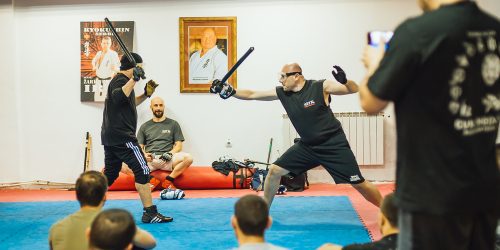
Weapons Use
As mentioned above one of the characteristics of Arnis is the use of weapons from the very beginning of training. This is in stark contrast to other Martial systems where weapons are often taught at advanced levels. Arnis practitioners believe that hand-to-hand combat attacks are similar to those with weapons. As a result, these skills are developed concurrently. Indeed weapons use is seen as simply an extension of the body.
A major focus in training is on transitioning from fighting with weapons to empty hands fluidly. The reason for this is there is always the possibility of losing or being without a weapon. All the same angles and footwork are used either with or without a weapon. Arnis is very pragmatic in this respect. You take every advantage offered in a fight, If you have a weapon… You use it! If you are in a self-defense situation, you neutralize your opponent as quickly and efficiently as possible. Using anything close to hand, no quarter given, no questions asked. Naturally, a trained armed person has a great advantage over an untrained (or even trained) unarmed person.

Knife Culture
The Philippines Martial traditions are (as you have probably noted by now), very much a ‘blade’ culture. Tribal warriors went into battle armed with blades, only resorting to unarmed combat after losing their weapons. Sticks were only introduced historically to avoid the Spanish authorities from detecting they were actually practicing during ritual dances. However, stick use has continued into the present day mainly to avoid knife injuries in practice.
Some FMA systems begin training with two weapons, either a pair of sticks or a stick and a wooden knife. These styles emphasize keeping both hands armed and never moving them in the same direction, and train practitioners to become ambidextrous. (For example, one stick may strike the head while the other hits the arm). This makes attacks very difficult to defend against. Such training develops the ability to use both limbs independently, a valuable skill, even when working with a single weapon.
The Weapons of FMA
Impact weapons
The primary weapon is the stick, called a baston (baton), it is also known as an Olisi or Yantok. The baston varies in size (usually around 28 inches (71 cm) in length). They are typically constructed from rattan, an inexpensive stem from a type of Southeast Asian vine. Hard and durable yet lightweight, it shreds only under the worst abuse and does not splinter like wood, making it a safer training tool. This aspect makes it useful in defense against blades. Both single and double stick techniques are taught, with an emphasis on the former. Unarmed defenses against the stick and bladed weapons are a part of the curriculum. In modern times, many Arnisadores wear protection to the head and hands while sparring with bastons. Sometimes padded bastons are used, again to protect the Arnisadores in sparring practice.

Doble baston, and less frequently ‘Doble olisi’, are common names for fighting using two baston’s. Wielding two bastons gives greater advantages on an attacking front. Becoming proficient in attacking in this manner takes great practice, however. In Arnis circles, double baston drills and techniques are referred to as ‘Sinawali’ (meaning “to weave’ in Tagalog). The term Sinawali comes from a matting called ‘sawali’ that is commonly used in tribal Nipa Huts in the Philippines.
This technique requires the user to use both left and right weapons with equal skill. To achieve this many coordination drills are practiced to help the practitioner become more ambidextrous. It is the section of the art that is taught mainly at the intermediate levels and above and is considered one of the most important areas of learning in the art.
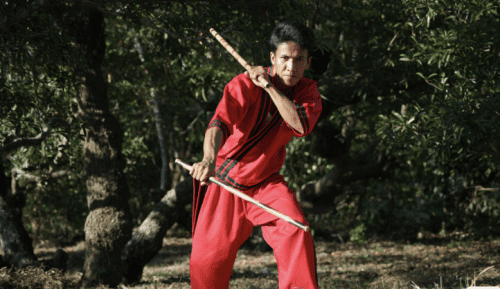
- Baston (olisi, yantok): stick ranging from twenty-four to twenty-eight inches long.
- Largo mano yantok: longer stick ranging from twenty-eight to thirty-six inches
- Dulo dulo: short stick about four to seven inches in length, held in the palm.
- Bankaw: six-foot pole.
- Improvised weapons: Wooden planks, steel pipes, umbrellas, flashlights, rolled-up magazines/ newspapers, books, pool/snooker cues, bottles, chair legs, tree branches, etc.
Edged weapons
Baraw is a Cebuano term used in Arnis that means knife or dagger. Other Filipino regions more commonly use the term ‘Daga’ but both terms are often interchangeable. Like the baston techniques, Baraw/Daga is taught with both single weapon and double weapon varieties. Other methods include a combination of weapons. For example long blade and short blade methods (Espada y Daga) and, stick and dagger methods (Olisi Baraw), etc.
- Daga/Cuchillo: daggers or knives of different shapes and sizes.
- Balisong: the famous fan knife or butterfly knife. The handle is two-piece and attaches to a swivel that folds to enclose the blade when shut.
- Karambit: A claw-shaped Indonesian blade held by inserting the finger into a hole at the top of the handle.
- Bolo: a knife/sword similar to a machete
- Pinuti: a type of sword from Cebu, similar to a Sundang but elongated.
- Iták or sundáng: a farm or household bladed implement.
- Barong: wide flat ‘leaf-shaped’ blade.
- Binakoko: long blade named after a fish.
- Dinahong palay: has a very narrow blade shape similar to a rice leaf.
- Kalis or Kris: Indonesian dagger, often given a wavy blade, it is most commonly used in the southern provinces
- Kampilan: fork-tipped sword, popular in the southern Philippines
- Sibat: spear
- Improvised weapons: Icepicks, box cutters, screwdrivers, scissors, broken bottles, pens, car keys (using the push knife grip).

Flexible weapons
Flexible weapons are also used within Arnis. However, their use is not as popular as the weapons mentioned above. Flexible weapons can be used to initiate locks, tie-ups, chokes, and strangles on opponents.
- Sarong: a length of fabric wrapped around the waist like a belt.
- Ekut: handkerchief
- Tabak-toyok: Rice flail (aka nunchaku)
- Latigo: A type of whip.
- Improvised weapons: Belt, bandana, handkerchiefs, shirts, towels/socks with hard soap bars/rocks, ropes, power cables, etc.
Mano Mano (Empty Hand Combat)


Mano Mano is the empty-hand component of Arnis. The term translates as ‘hand to hand’ from the Spanish word mano (hand). Mano Mano incorporates kicking, punching, locking, throwing, and grappling. Filipino martial artists regard empty hands as just another weapon. Indeed all the movements of Mano Mano are directly based on weapon techniques. In Arnis, weapons are seen as an extension of the body so training with weapons naturally leads to proficiency in bare-handed combat. For this reason, Mano mano is often taught in the higher levels of Arnis after weapons training has been mastered because advanced students are expected to be able to apply their experience with weapons to unarmed fighting.


The goal of kicks in Arnis is to inflict pain or to break or dislocate the bones. Kicking techniques involve applying pressure to bend the target areas in unnatural ways to injure or break them. The strikes are delivered in the form of heel smashes, low line kicks, toe kicks, trips, stomps, or knee attacks. Sought after targets include the groin, thighs, knees, shins, ankles, feet, and toes.
The live hand is an important concept and a distinguishing hallmark of Arnis. The live hand involves the use of the opposite hand of the practitioner that does not contain the main weapon. Arnisadores use the live hand for trapping, locking, supporting weapon blocks, checking, disarming, striking, and controlling the opponent. A ‘Live hand’ can be one either armed with a companion weapon or unarmed.

Some Important Concepts
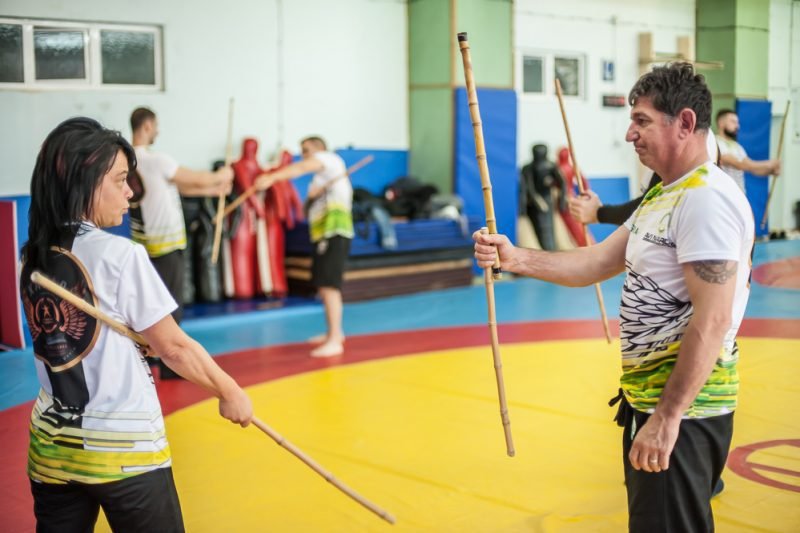
Most systems recognize that the technical nature of combat changes depending on the distance between opponents. All Arnis styles also recognize that being able to work in and control any range is essential. Therefore Arnis has techniques that are specific to the various distances, whether these are long, medium, or short-range. Each range has its characteristic techniques and footwork. Arnisadores are taught to control the range of a fight. To achieve this control good footwork is drilled in lessons.
Arnis’s training is straightforward. Attacks are done simply and efficiently. The attacks are classified into different angles. The type of weapon – whether stick, bladed or bare hands makes little difference because the principles of attack and defense are the same. The use of drills in practice increases the practitioner’s speed and reflexes. They etch the attacking and defensive moves to the practitioner’s memory until they become a conditioned response. This provides Arnisadores with confidence making them more capable of defending themselves in times of adversity.
Many FMA systems focus on defending against and/or reacting to angles of attack rather than particular strikes. The thinking being that virtually all types of hand-to-hand attacks (with/without weapon) hit or reach a combatant via these angles of attack. It is therefore more practical to defend against various angles of attack than learn to defend against a specific attack. For example, an overhand punch is viewed in the same way as an overhead attack with a knife or a club. It is the angle to be considered rather than a technique aimed at stopping that specific type of attack. These angles are numbered from 1-12 to help Arnis students memorize them and are rehearsed in practice rigorously.
The most fundamental drill, known as ‘1 to 12’, encompasses alternate defense and the block against the basic baston blows. At the start of the training, the strikes are performed in a particular pre-arranged order. However, this changes as the practitioners advance in skill. In time the order becomes more randomized and varied so the Arnisadore has to anticipate the attacks. At advanced levels, the incoming attacks can come from any limb and any angle.
In Arnis, there are 12 attack angles and 12 corresponding defenses. Every angle of striking represents specific target regions of the body.
- Angles number 1 and 2 are lateral strikes from the head’s top to the neck’s base.
- Angles 3 and 4 are lateral strikes from shoulders to hips. The primary targets are the elbows, hands, and shoulders.
- Angle 5 is a midline push from below upward.
- Angles 6 and 7 are lateral strikes to the armpits or chest.
- Angles 8 and 9 are lateral strikes from hips to feet. The target spots are the shins, ankles, knees, or feet.
- Angles 10 and 11 are lateral strikes to the neck or eyes
- Angle 12 is a midline strike from above downwards
Arnis training emphasizes timing and rhythm with strikes, this is to help a practitioner get into the ‘flow’ of a fight. To attack and defend effortlessly, by reading the body movement of their opponents and responding accordingly. The rhythm should be in sync with the moves of your opponent. Looking for any signs of ‘telegraphed’ movement from shoulders or hips that suggests they are about to attack. Like any skill worth learning, it can take time and effort to learn. Timing and precision are very important factors to consider with Arnis.
Arnis’ fight mentality does not take its opponents lightly. Whether sparring in class or confronting opponents on the streets the assumption is that the enemy is capable. That is they are to be considered potentially well trained and able to fight. If you are in a fight then you are in danger and you must use all options open to you.
Arnis considers using vicious force to incapacitate an attacker. This is rather than disarming them or trying to convince them to stop. One important concept in Arnis is known as ‘defanging the snake’. This involves striking at the opponent’s hands and arms, hoping to break the hand-holding weapons. Knife attacks aim to sever nerves or tendons of opponents thus reducing any ability they have to attack. Striking to vulnerable areas such as the eyes, legs, throat, and groin are also important.
Initially, practitioners will use practice weapons during training, (although this may change as they progress). Once progress has been made with basic technique then the practice speeds up. Arnis training and sparring can be blindingly fast, blink and you will miss it. This is to compel each practitioner to sharpen their skills and reflexes so they will be ready for the realities of actual combat. Over time, Mano Mano (unarmed combat) training is also emphasized to enable a practitioner to flow from armed to unarmed combat effortlessly.
Another important factor with Arnis training is ‘Economy of movement’. This is to seek the shortest trajectory with attacks all the time. With many of the traditional fighting arts, there are extended circular trajectories for strikes and blocks. Unless you have the speed of a cobra these can be tricky to pull off, take a lot of energy, and are often easily anticipated by opponents. They are often not ‘economical attacks’. They take up too much time and effort and can leave a fighter seriously exposed to a counter-attack if not careful. In Arnis, speedy, powerful, direct attacks are emphasized. Attacks that are not telegraphed and which deliver the maximum impact whilst conserving energy.
Health and Fitness Benefits
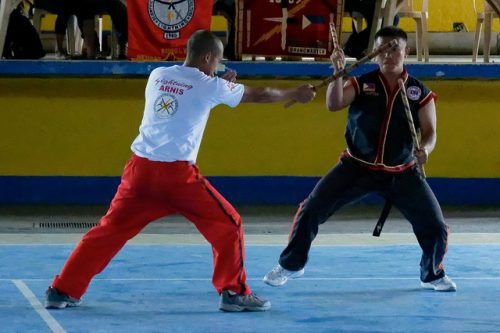
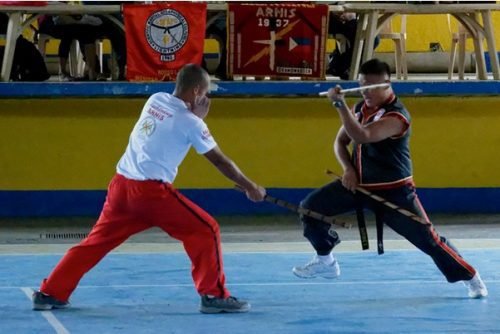
Escrima drills and sparring can provide an excellent full body workout.
An average Arnis class can last for two hours. The class’s intensity may vary from moderately strenuous to very strenuous. The range of movements in both solo and two-man drills within classes can help develop aerobic fitness. Double Baston practice in particular can provide an intense aerobic challenge for anyone. The demand on the heart and lungs of performing the drills for several rounds can be considerably taxing. Sparring is made even more physically challenging with the addition of wearing protective armor in sparring matches. An average match lasting 2-3 minutes with little rest in between requires a great deal of aerobic and muscular endurance.
Weapons use in Arnis can help improve strength in the wrists, forearms and the hands. The muscles and ligaments will adapt to the stresses of training with weapons overtime. To be able to keep a baston in the hand during a fight, the Arnesador must develop good grip strength. Good grip strength is a sadly overlooked aspect of health and fitness. It is one that has real life value. How valuable is a good grip in everyday life? Lifting, carrying objects. This carries over into other aspects of training also such as resistance training (lifting dumbbells, chinups etc). Developing good wrist strength can also troubleshoot problems in the wrists such as carpal tunnel syndrome.
The basic movement patterns of Arnis can be highly beneficial to shoulder girdle health and mobility. (In particular specific attacks involving flowing circular patterns or figure-eight style motions characteristic with Arnis). The shoulder joint is one of the most movable joints in the body, however it is also one of the most fragile. As such it is easy to damage or dislocate if shoulder health is ignored in training and everyday life. Training with a variety of weighted weaponry in Arnis can vastly improve shoulder health. Very similarly to the health benefits of training with an Indian Steel Mace.
The footwork involved in Arnis drills can benefit the lower body joints also. The continuous movement required with drills and sparring stimulates all of the joints in the lower body.
Arnis can assist in improving muscle tone and strength. There are varying levels of resistance offered to the muscles by the different weights of weapons used in Arnis training. These are drilled for long periods, developing muscle by isometric muscle contraction. This is similar to static holds used in resistance training. Furthermore, muscular power is needed to generate the force required for attacks with the bastons. Similarly, to defend against an attack requires strength to absorb the impact and not to lose the weapons being held.
Conventional resistance training usually limits movement to simple up/down or forward/backward types of linear movement. Since the attacks in Arnis come from different angles they can target the muscles in the ‘hard to reach’ areas. Granted, the resistance offered may not be as great. However, if used in conjunction with a regular resistance program, Arnis training may complement that training and assist in producing muscular gains.
Overall, Arnis can challenge different muscular areas of the upper body, core, and lower limbs in a singular workout.
The baston drills and sparring can exercise both agonist and antagonist muscles (flexors, extensors, adductors, abductors, inward and outward rotators). All of which are involved with the various attacks and counters employed.
Arnis requires much coordination to execute the intricate movements involved. The lighting fast attacks and counters require you to think fast and be creative when attacking and blocking. A high degree of motor sensory skill and hand-eye coordination are required. Don’t worry if you don’t have great reflexes, nothing gives you faster reactions than a little pain. The drills/sparring in classes start off easy and build in difficulty, all to attune your senses and reaction times to incoming attacks. Over time anticipating attacks and counter-attacking movements become more natural automatic responses.
As in most martial arts, training in Arnis requires a great deal of discipline and self-control. Consistency, effort, continual practice are all required to help perfect technique and improve skills. This transfers to everyday life, the discipline you learn in classes will have a knock-on effect in all aspects of life.
Practicing Arnis, you get to meet many new people from various life and training backgrounds and socialize. Variety is the spice of life, Arnis is a great way to open new doors and engage with people you wouldn’t have known existed. At some point, you’ll be sparring with someone and friendly competition is its own reward. Learn, engage, and better yourself through healthy competition. Most Arnis schools not only teach the art itself, but they also pass on the value of respect and family to their students.
Exercise is correlated to good psychological well-being. Limitless studies have demonstrated the relationship between exercise and the increase of endorphins (neurotransmitters associated with feeling happy). Exercise is also connected to lower stress levels, which is great for anyone’s well-being. Learning Arnis can give you a confidence boost in life. It provides a sense of security that you will be (at the very least) capable of defending yourself in a life-threatening situation.
Conclusion
Arnis comes from a bloodied history, the Spanish, the Japanese, and the Americans will certainly testify to this. Filipino martial culture has indeed produced one of the world’s most deadly fighting arts. Thankfully this martial heritage continues to flourish and is indeed more popular than ever.
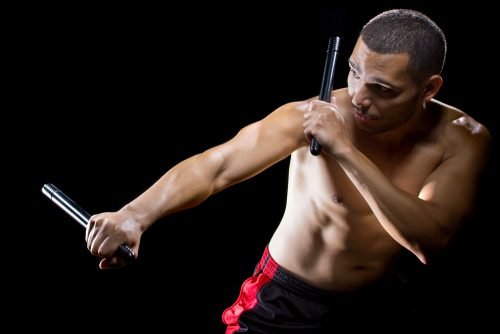
For training, Arnis can provide a wealth of benefits. These include cardiovascular improvements, muscular strength gains, improved joint function, reaction time, speed, power, and endurance to name a few. As a martial art Arnis has certainly proved itself. The constant motion, fluctuating angles, and simultaneous combination of weapons/bare hands involved making Arnis very difficult to defend against.
So is Arnis training for you? FMA training is more popular than ever and readily accessible in many nations worldwide. Enjoy martial arts? Need something to boost your regular training methods? Just looking for something new? Perhaps Arnis is what you are looking for.
If you have enjoyed this Post please share or feel free to comment below 
Related Posts
Our Other Posts
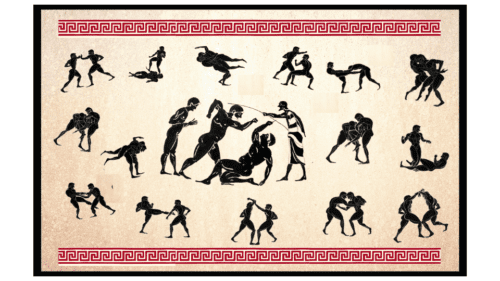
Ancient Pankration – Combat Sport of Ancient Greece
Pankration was an Ancient Greek no-holds-barred martial art combining aspects of boxing and wrestling, introduced

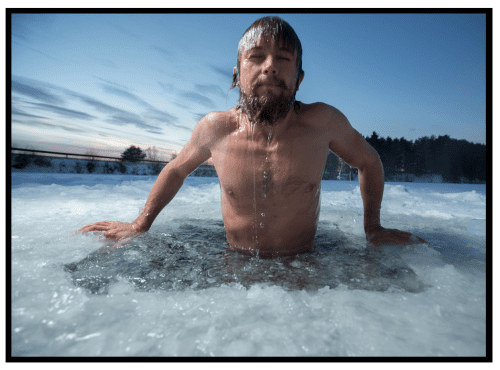


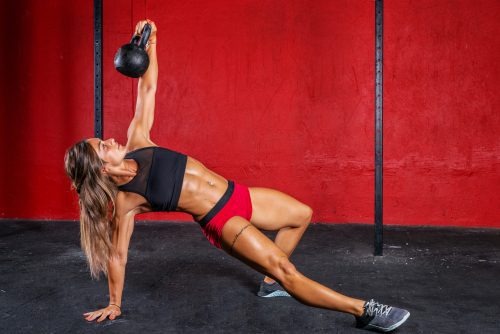

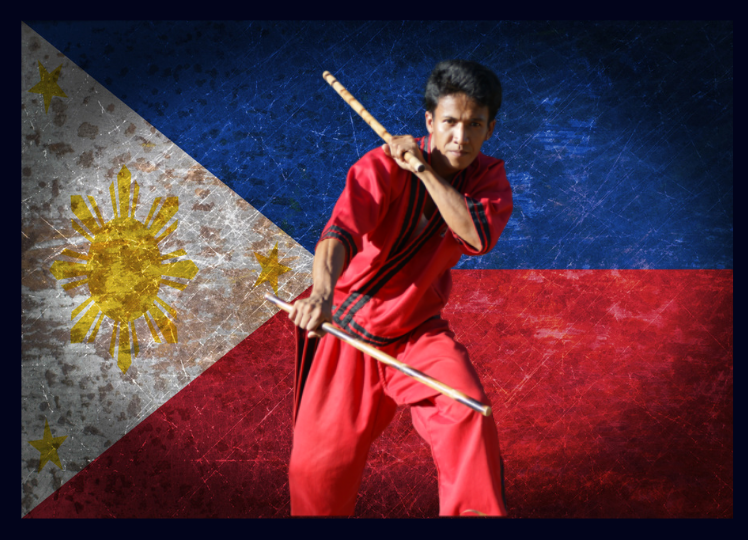
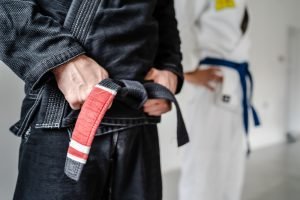

1 thought on “Arnis – Filipino Martial Arts”